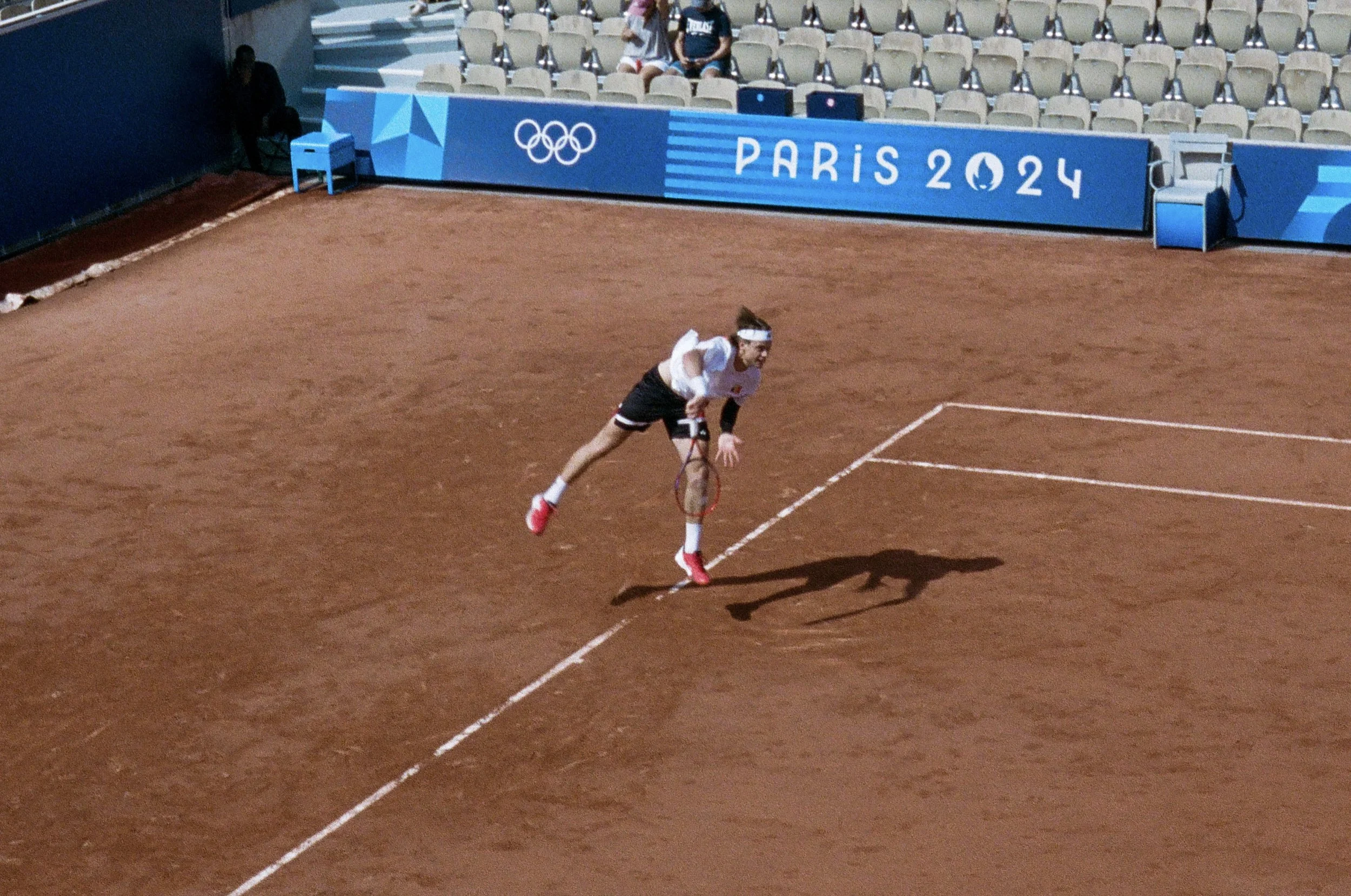Clay Court Crucible: The Pressure and Precision of Olympic Tennis
Heat from the sun beams down on the terracotta clay of Roland-Garros Stadium in Paris, France. Nestled within a plant conservatory, the greenhouse-style structure creates an atmosphere that blends seamlessly with the lush, green environment behind the bleachers.
Under partly cloudy skies and a temperature of 21 degrees Celsius at 12:00 PM, spectators take their places in the stands. We are moments away from the start of this tennis match at the XXXIII Olympiad.
The first match features Felix Auger-Aliassime from Canada (13) against Marcos Giron from the United States. The pair meet in the center of the court, bouncing on their heels as the coin toss determines the start of their game. The toss goes in Giron's favor. The announcer calmly delivers the intense phrase: “Ready, begin.”
As the match begins, both players trade serves with consistent speed, the rising heat and the pressure of being watched by hundreds are stressors they must overcome and forget.
Spectators turn their heads from side to side, following the ball as if they were part of it. Meanwhile, volunteers work tirelessly in a loop, collecting the ball, passing it to the player, and then returning to their positions.
Auger-Aliassime lands the first 15 points with a powerful serve, followed by another 15 due to Giron’s error. The audience gasps as they watch the athlete stretch to reach the ball in time. The first game ends in Felix’s favor, and the players switch sides.
In just a few minutes, the next game concludes with Giron taking the lead. The intensity continues to rise, and the dynamics of the audience’s applause reflect the anxiety behind the 1-1 scoreboard.
Ball boys and girls hold a stance that demonstrates their focus on the match. They range in age, some young teenagers, others in their late middle age. They are both prepared and not, all at once. Despite lacking safety equipment to protect them from the high-speed ball, they willingly take the risk, relying on their agility to avoid injury. So far, no one has been hurt; instead, they remain dedicated and honored to assist in the game.
The next game follows with an intense draw between the two players. Both exhibit outstanding athletic abilities and powerful stability, but Felix breaks the tie, bringing the score to 2-1.
In the following game, Giron serves at a speed of 192 km/h, and the spectators continue to swivel their heads. I wonder why they don’t simply move their eyes. The audience is so connected to the game, their entire spirit seems invested, and their concentration only adds to the swelling pressure the players must endure.
Trouble arises for Giron as the scoreboard shifts to 1-3, then to 1-4. Giron seems trapped in a repetitive cycle, losing momentum throughout the match. By the fifth game, it appears Auger-Aliassime may have expended his strongest efforts at the start. Despite this, Giron ultimately loses the match due to his consistent errors, particularly in hitting the net. Auger-Aliassime’s powerful serves prove unstoppable, and he is crowned the winner.
The potent, anxiety-inducing energy from the spectators is common in sports, but it seems even more intense at the Olympic Games. With players representing their nations, medals on the line, and the summer sun blazing, it’s a miracle if a player’s performance isn’t affected by the pressure.
Performance anxiety during the Olympic Games has many layers that a typical viewer may not consider. This heavily televised event is one of the most expensive broadcasts executed every four years, and the stakes for the players’ careers are at an all-time high.
Scrutiny is easy to offer without facing the consequences, and the players are well aware of how ruthless society can be when they make a mistake. Each time the tennis racket slams against the neon green ball and it successfully flies to the other side, it’s an immense relief for those risking it all—until the ball returns in only a few seconds.
